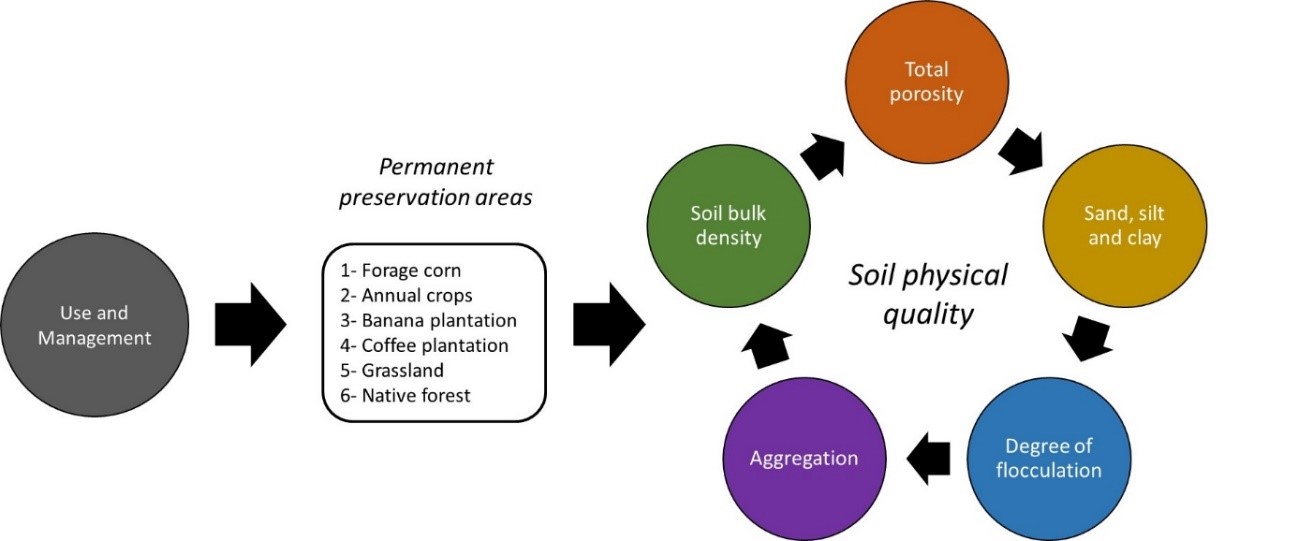EVALUATION OF SOIL PHYSICAL ATTRIBUTES IN AREAS UNDER DIFFERENT USES AND MANAGEMENT OF THE DOCE RIVER BASIN
DOI:
https://doi.org/10.36524/ric.v10i1.2262Keywords:
environmental legislation, perennial crops, soil structure, soil preparation, crop rotationAbstract
Permanent preservation areas, defined by Brazilian law, are fundamental for the protection of water and environmental resources. The replacement of native forest areas of the Atlantic Forest biome by types of agricultural management contributes to soil degradation and identifying management with less impact on the soil is a current need in the Rio Doce basin. The objective of this work was to evaluate the soil physical attributes in different types of use and management, at Ifes Campus Itapina, located on the banks of the Rio Doce. The types of use and management evaluated were: 1- forage corn, 2- annual crops in rotation, 3- banana plantation, 4- coffee plantation, 5- pasture and 6- native forest. Soil samples were collected in volumetric cylinders in the 0.00-0.10 m layer to determine physical attributes: soil bulk density and total porosity. The deformed soil samples were collected to determine the granulometric fractions, clay dispersed in water and flocculation degree. Structure-preserved samples were collected to measure aggregation indices. Data were submitted to statistical analysis considering a completely randomized design, with four replications. Management with forage corn showed higher soil bulk density and clay dispersed in water and lower total porosity. Management with forage corn and annual crops in rotation showed the highest values of weighted average diameter. Areas that underwent several anthropogenic interventions with questionable agricultural management practices showed a reduction in soil physical quality compared to native forest, which can contribute to the increase in soil manipulation in the Doce River.

Downloads
Published
Issue
Section
License
Copyright (c) 2024 Revista Ifes Ciência

This work is licensed under a Creative Commons Attribution-NonCommercial-NoDerivatives 4.0 International License.
Autores que publicam nesta revista concordam com os seguintes termos:
- Autores mantém os direitos autorais e concedem à revista o direito de primeira publicação, com o trabalho simultaneamente licenciado sob a Licença Creative Commons Attribution que permite o compartilhamento do trabalho com reconhecimento da autoria e publicação inicial nesta revista.
b. Autores têm permissão e são estimulados a publicar e distribuir seu trabalho online (ex.: em repositórios institucionais ou na sua página pessoal) a qualquer ponto antes ou durante o processo editorial, já que isso pode gerar alterações produtivas, bem como aumentar o impacto e a citação do trabalho publicado (Veja O Efeito do Acesso Livre).


